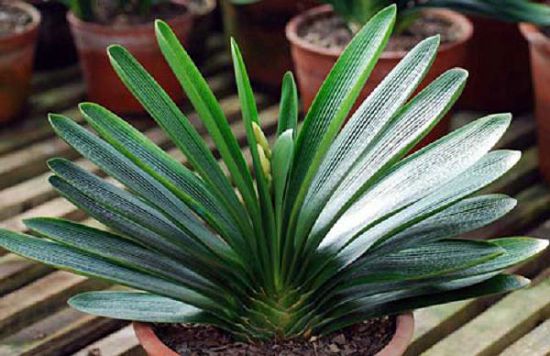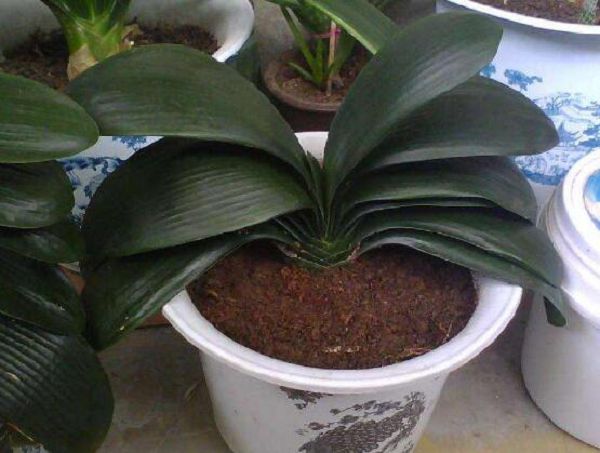How do orchids breed? Introduction to the breeding methods of Cymbidium

Clivia is native to subtropical mountain forests in southern Africa. It is a perennial evergreen herb. It is often propagated by sowing and sub-planting methods. It can also be propagated by old roots. The following small series introduces these propagation methods of Clivia respectively!
Clivia seed propagation method
Clivia likes slightly acidic soil, with pH 6-6.5 is appropriate. The time requirement for propagation of Clivia by sowing method is not strict. It can be sown in spring, autumn and winter, but the temperature is an important factor. It is best to sow under the condition of 20-25℃, which can adapt to the temperature requirement of embryo germination.
1. Substrate for breeding: wood shavings, wood chaff, or fine sand, some also use rotten leaves, preferably wood shavings, or wood chaff. Then look for plastic baskets, or you can use ventilated tile pots. Take wood shavings as matrix soil for example, disinfect it first, then soak the disinfected wood shavings in water, put them in baskets, put them under pressure and level them.
2. Seed treatment: Put the seeds in warm water, about 20-30 degrees Celsius, soak for 30 minutes, or one hour, and then put the small eyes of the seeds down one by one, spaced apart, and arranged in good order. After arranging, cover the seeds with 2-3 cm of wood shavings and gently flatten them neatly. After the above procedures are completed, water is sprayed through, and the basket is placed in a ventilated place to complete the process.
3. Daily management: breeding should be based on the principle of ventilation and moisture. If it is the first time breeding, generally open the shavings to see the seeds, so pay attention to wash your hands, or use a clean small stick to look through. The substrate must not be contaminated with oily substances. Oily seeds are infected.
4, moisturizing: usually see the wood is moist, do not water every day, too much water will make the seed moisture variable rot. If it is too dry and watered again, there will be no water, and the seeds will not sprout if they are too dry.
5, insulation: generally between 15-30 degrees, do not put the seeds above 10 degrees, the north is best to keep more than 10 degrees, 32 degrees below, generally too cold in the lamp insulation, in the south Lanyou can move to the balcony at noon where there is sunshine to warm up.
6, water quality: need to trap tap water for a day, then water, do not use tap water directly, because tap water has chlorine, affecting seed germination.
7, germination: generally normal, good care, germination in half a month, some earlier. It is best not to look at it all day after germination, because after germination, the buds will hold the shavings into a ball and grow with profit.
About forty-five days later, the germinated seeds will become longer and longer, the roots will grow downward, there will be tender green pants leaves next to the seeds, will naturally grow upward, usually care for good water can be.
Clivia propagation method
The asexual propagation of flowers has cuttage, division, layering, grafting and other methods, but the asexual propagation of Clivia is generally only using the division method, hanging smile Clivia using this method is more common, with the division method propagation, first to do a few preparatory work:
1. Preparation for propagation of ramets
① Family potted plants should be prepared with flower pots, flower pots are best earthen pots, do not buy porcelain, pottery, because they have poor air permeability, which is not conducive to plant development and growth.
② Prepare the medium soil, and it is best to disinfect it. If humus soil is mixed with fine sand, humus soil should be disinfected by spraying 1000-2000 times aqueous solution of potassium permanganate. The fine river sand should also be scalded and disinfected with boiling water to avoid the seedlings from being infected and decayed by germs.
③ Prepare a little charcoal powder to smear the wound as moisture absorption to prevent decay.
④ Sharpen the knife used for cutting, and finally quickly dry grind (without adding water) dozens of times on the grindstone to make the blade highly heated to kill germs.
2. Operation method of plant division propagation
1, first Clivia mother plant from the basin with, remove the soil, find out can be divided into plants of the organ bud. If the daughter plant is born on the outer edge of the mother plant and the plant is small, you can hold the bulb part in one hand and pinch the base of the daughter plant in the other hand, and tear it off. If the seed plant is strong and difficult to break off, it should be cut off with a sharp knife prepared. Do not force break, so as not to damage young plants. After the daughter plant is cut, the wound should be immediately smeared with dry charcoal powder to dry up the fluid and prevent decay. Then, plant the seed plants in pots.
2. The planting depth is to bury the false bulb at the base of the daughter plant, and the position of the seedling plant should be slightly higher, and covered with sterilized sand. After planting, pour a permeable water immediately. When the wound heals 2 weeks later, cover it with a layer of culture soil. It usually takes 1-2 months to produce new roots and 1-2 years to bloom. Clivia propagated by plant division method has relatively stable heredity and can maintain various characteristics of the original seed.
Clivia old-root propagation method
The fleshy roots of Clivia have strong regeneration ability. According to this characteristic, the old roots of Clivia with older plants can be broken off by turning pots and changing soil in spring. After treatment, it can be forced to regenerate new roots. In that year, it can become a new Clivia. The specific methods are as follows:
1. Select the old roots of Clivia with suitable thickness, the diameter of which is 1.2 cm to 1.5 cm. The seedlings that are too thin grow slowly. If they are too short, they will affect the growth of the plants. Insert a pin into the middle of the roots or cut a 0.3 cm to 0.5 cm opening with a blade at the old root insertion site. Apply B12 solution to the wound to stimulate growth and promote germination.
2, the treated old roots buried in the disinfected fine river sand or rotten leaf soil, the depth of 0.5 cm is appropriate. After 3 months at 20℃ to 25℃, green spherical nodules were formed at the incision or needle insertion, and after 25 days of maintenance, the spherical nodules gradually germinated into new buds and became a new Clivia.
Related
- Is the orchid suitable for indoor use? Is it good for the body?
- How to prevent the empty root of orchids?
- What to do after the crab claw orchid is withered?
- Why are the leaves of orchids always yellow? Fertilizing and watering.
- Can the root of the gentleman orchid be saved if it is rotten?
- Diagnosis and treatment of cotton-blowing beetle insects in Cymbidium
- There is a way for a gentleman's orchid to rot.
- What is the most suitable temperature and humidity for the orchid?
- How to raise a gentleman's orchid? Cultivation techniques of Cymbidium
- How to prepare the nutritive soil for the cultivation of Cymbidium



